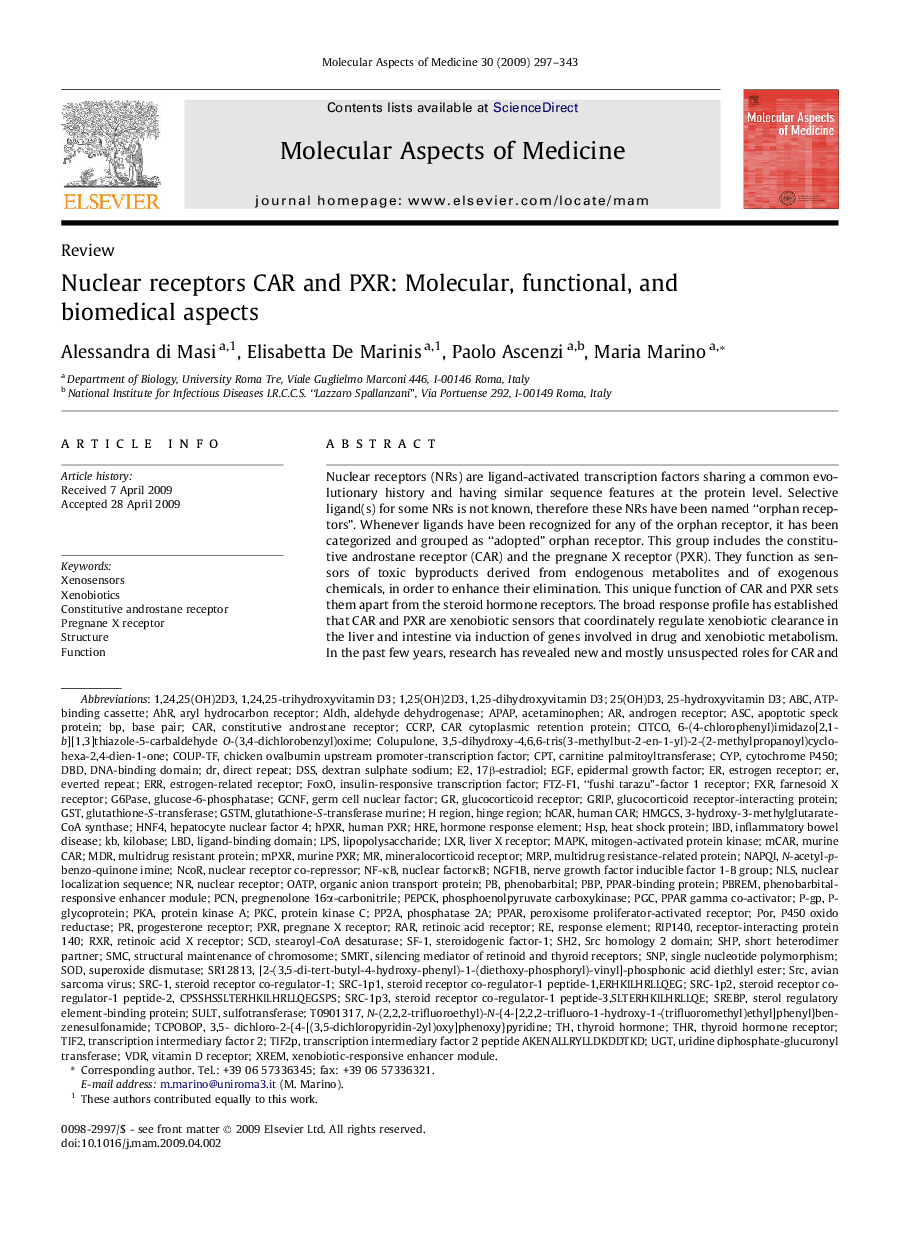| کد مقاله | کد نشریه | سال انتشار | مقاله انگلیسی | نسخه تمام متن |
|---|---|---|---|---|
| 1995903 | 1541471 | 2009 | 47 صفحه PDF | دانلود رایگان |

Nuclear receptors (NRs) are ligand-activated transcription factors sharing a common evolutionary history and having similar sequence features at the protein level. Selective ligand(s) for some NRs is not known, therefore these NRs have been named “orphan receptors”. Whenever ligands have been recognized for any of the orphan receptor, it has been categorized and grouped as “adopted” orphan receptor. This group includes the constitutive androstane receptor (CAR) and the pregnane X receptor (PXR). They function as sensors of toxic byproducts derived from endogenous metabolites and of exogenous chemicals, in order to enhance their elimination. This unique function of CAR and PXR sets them apart from the steroid hormone receptors. The broad response profile has established that CAR and PXR are xenobiotic sensors that coordinately regulate xenobiotic clearance in the liver and intestine via induction of genes involved in drug and xenobiotic metabolism. In the past few years, research has revealed new and mostly unsuspected roles for CAR and PXR in modulating hormone, lipid, and energy homeostasis as well as cancer and liver steatosis. The purpose of this review is to highlight the structural and molecular bases of CAR and PXR impact on human health, providing information on mechanisms through which diet, chemical exposure, and environment ultimately impact health and disease.
Journal: Molecular Aspects of Medicine - Volume 30, Issue 5, October 2009, Pages 297–343